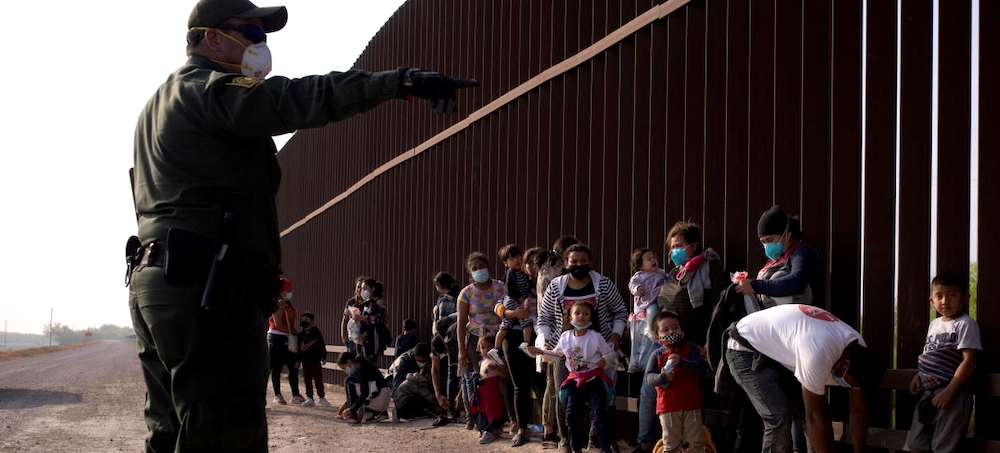Six Years Later, 1,400 Children Remain Separated From Their Families
Philip Bump The Washington Post A U.S. Border Patrol agent instructs asylum-seeking migrants as they line up along the border wall after crossing the Rio Grande river into the United States from Mexico on a raft, in Penitas, Texas. (photo: Adrees Latif/Reuters)
A U.S. Border Patrol agent instructs asylum-seeking migrants as they line up along the border wall after crossing the Rio Grande river into the United States from Mexico on a raft, in Penitas, Texas. (photo: Adrees Latif/Reuters)
More than 3,200 children pulled away from their families at the border have been reunified with them.
“I have put in place a ‘zero tolerance’ policy for illegal entry on our southwest border,” Sessions said. “If you cross this border unlawfully, then we will prosecute you. It’s that simple.”
“If you smuggle illegal aliens across our border, then we will prosecute you,” he continued. “If you are smuggling a child, then we will prosecute you, and that child will be separated from you as required by law.”
In practice, the policy applied to any child crossing the border between checkpoints. Adults were detained, and the children with them — sons, daughters, nieces, nephews, whoever — were sent somewhere else. The intention was obvious, as was quickly made apparent: The administration sought to deter people from coming to the United States by presenting the very real possibility that they would lose their children by doing so.
Public outcry soon forced the administration to shift the policy. The public called for children separated from their families to rejoin them. But the administration didn’t keep records allowing that to easily happen. Joe Biden made reunification a part of his 2020 campaign for president and, upon taking office, instantiated a task force that aimed to figure out how to get kids back to their families.
Last month, the task force published its most recent set of data on the reunification efforts. More than 3,200 children have been reunited with their families, about 800 of them thanks to the task force’s work. An additional 1,400, though, have not been — at least through the auspices of the task force. Of the 1,400, about 300 are either in the process of being reunified or have had their families contacted.
The numbers shift over time, in part because the legal landscape changes. In October, for example, a case filed in June 2018 — Ms. L. v. U.S. Immigration & Customs Enforcement — was finally settled. That settlement meant that about 350 children were added to the pool of those needing to be reunified with their families because the boundaries of what qualified as a separation had changed.
As he seeks reelection to the presidency, Donald Trump has again focused on immigration as an issue and pledged a hard-line approach. Speaking on CNN last year, he celebrated the effects of the policy.
“It stopped people from coming by the hundreds of thousands,” he said, “because when they hear ‘family separation,’ they say, ‘Well, we better not go.’ And they didn’t go.”
A few months before, the Guardian reported on one family that had, after four years, finally been reunited. Nery Ortega Lima, an immigrant from Guatemala, described the point at which he was separated from his children.
“I had no idea where they were taking us,” Ortega Lima said. All the migrants there were quickly lined up and the father only had a few moments to say goodbye to his son — while officials held on to mothers trying to get their toddlers back.
“I told my son to not be afraid and that everything was going to be OK. I told him to be a good boy,” he said.
“I was in tears,” Lilian Yanes, the boy’s mother told the newspaper. “I remember seeing my son leave as a kid and now I saw he was a strong man.”
According to the most recent task force data, the families of more than 1,000 kids taken away at the border have not had the opportunity to see who those children have become.



